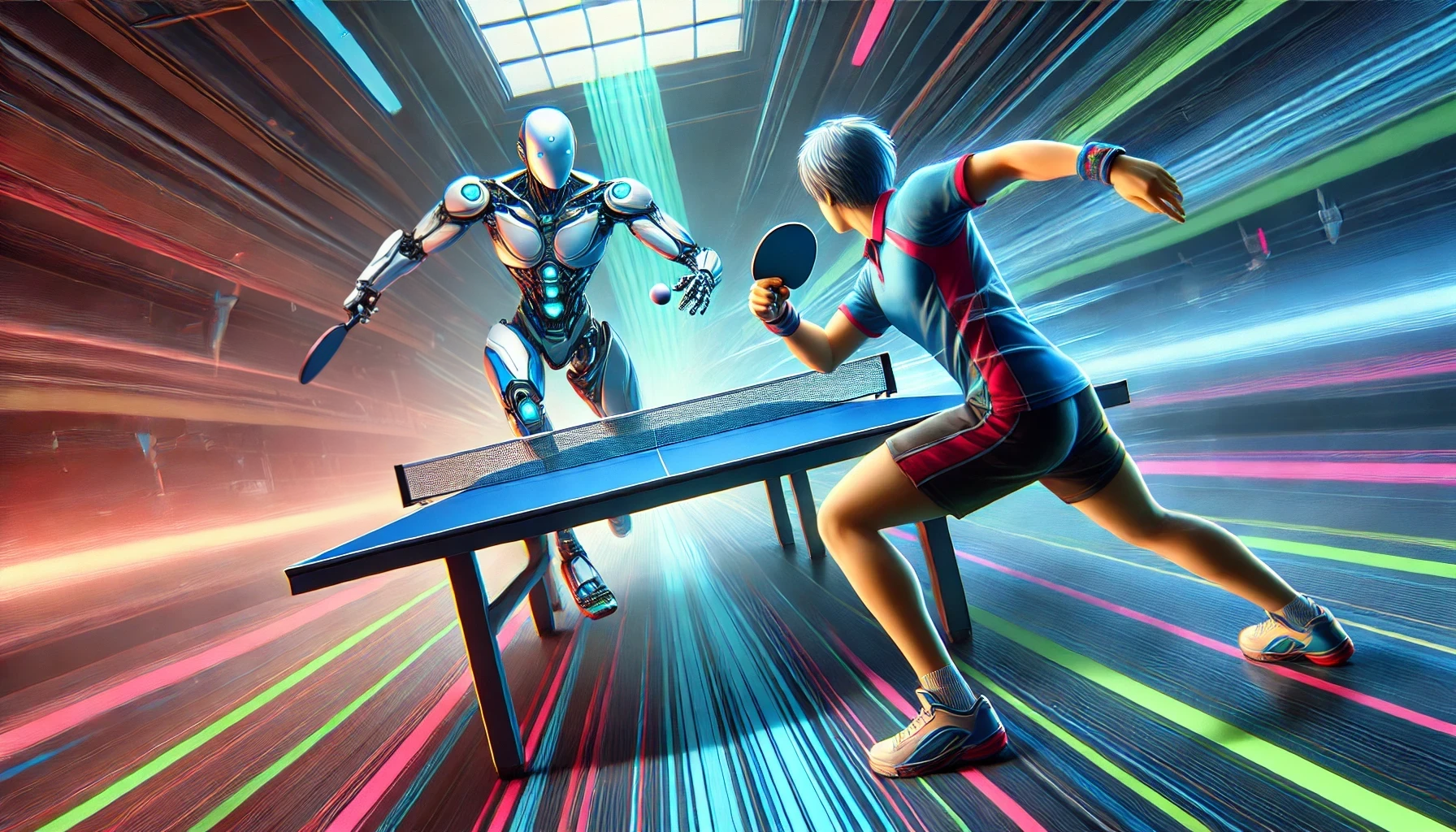In the ever-evolving landscape of artificial intelligence and robotics, Google DeepMind has once again captured the spotlight. This time, the tech giant has achieved a significant milestone by training a robot to beat human opponents in the fast-paced game of table tennis. This development not only showcases the advancements in AI robotics but also sparks intriguing conversations about the future of AI in sports.
Pioneering AI and Robotics in Sports
Google DeepMind’s latest breakthrough involves a robotic arm equipped with a 3D-printed paddle, which managed to win 13 out of 29 games against human players of varying skill levels. The remarkable feat highlights the sophisticated AI algorithms and robotics technology employed by DeepMind to enable the robot to adapt its gameplay strategies in real-time. This achievement was not without challenges, as researchers had to overcome complexities in mimicking human-like reflexes and decision-making processes (source).
The development process involved extensive testing and data collection, allowing the AI to learn from both its victories and failures. Google DeepMind’s researchers have expressed that the robot’s ability to play at an amateur level is a stepping stone towards more advanced AI applications in sports. This marks a significant leap forward from previous AI-driven sports robots, which largely focused on static and predictable environments (source).
Performance and Comparisons
The table tennis robot’s performance against human players has been a subject of extensive analysis. While the AI-driven robot can outperform amateur players, it still faces challenges against seasoned professionals. However, its ability to learn and adapt quickly is a promising sign for the future integration of AI in competitive sports. The robot’s success is a testament to the potential of machine learning and robotics in enhancing athletic performance and strategy development (source).
Comparatively, other AI sports robots have demonstrated capabilities in more controlled environments, such as chess or Go, where the variables are limited and predictable. Google DeepMind’s table tennis robot, however, operates in a dynamic setting, requiring split-second decisions and adaptability. This sets a new benchmark for AI robotics in sports, emphasizing the potential for human-machine collaboration in enhancing athletic experiences (source).
Implications for the Future of AI in Sports
The implications of Google DeepMind’s achievement extend beyond table tennis. The integration of AI in sports could revolutionize how games are played, coached, and even viewed. With AI’s ability to analyze vast amounts of data, sports strategies could become more precise and personalized. Moreover, AI-driven robots could serve as training partners for athletes, providing consistent and challenging practice sessions that are adaptable to the player’s skill level (source).
As the relationship between humans and machines continues to evolve, the possibilities for AI applications in various domains are expanding. The success of Google DeepMind’s table tennis robot is a glimpse into a future where AI not only complements human abilities but also opens new avenues for exploration and innovation. The potential for AI to transcend traditional boundaries and enhance human potential remains a tantalizing prospect, with applications extending far beyond the realm of sports (source).
All in all, Google DeepMind’s robot serves as a testament to the advancements in AI and robotics, sparking discussions about the potential for AI in sports and beyond. As technology continues to bridge the gap between science fiction and reality, the future of human-machine collaboration promises to be an exciting journey filled with possibilities.


